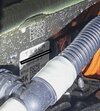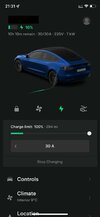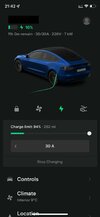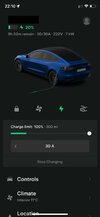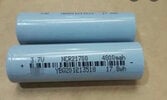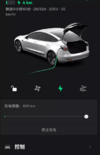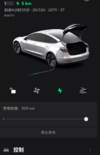Welcome to Tesla Motors Club
Discuss Tesla's Model S, Model 3, Model X, Model Y, Cybertruck, Roadster and More.
Register
Install the app
How to install the app on iOS
You can install our site as a web app on your iOS device by utilizing the Add to Home Screen feature in Safari. Please see this thread for more details on this.
Note: This feature may not be available in some browsers.
-
Want to remove ads? Register an account and login to see fewer ads, and become a Supporting Member to remove almost all ads.
You are using an out of date browser. It may not display this or other websites correctly.
You should upgrade or use an alternative browser.
You should upgrade or use an alternative browser.
MASTER THREAD: 2021 Model 3 - Charge data, battery discussion etc
- Thread starter EV Promoter
- Start date
Jeremy3292
Active Member
19" rimsCanada's Tesla website dropped the LR from 568KM to 538KM. Anyone have any idea why?
Max_G
Everything needs to be defined :)
Hi,
I posted a message on another thread about how my UK 2021 Model 3 Performance seems to have lost 5% range in my first month since new. I have done 1100 miles.
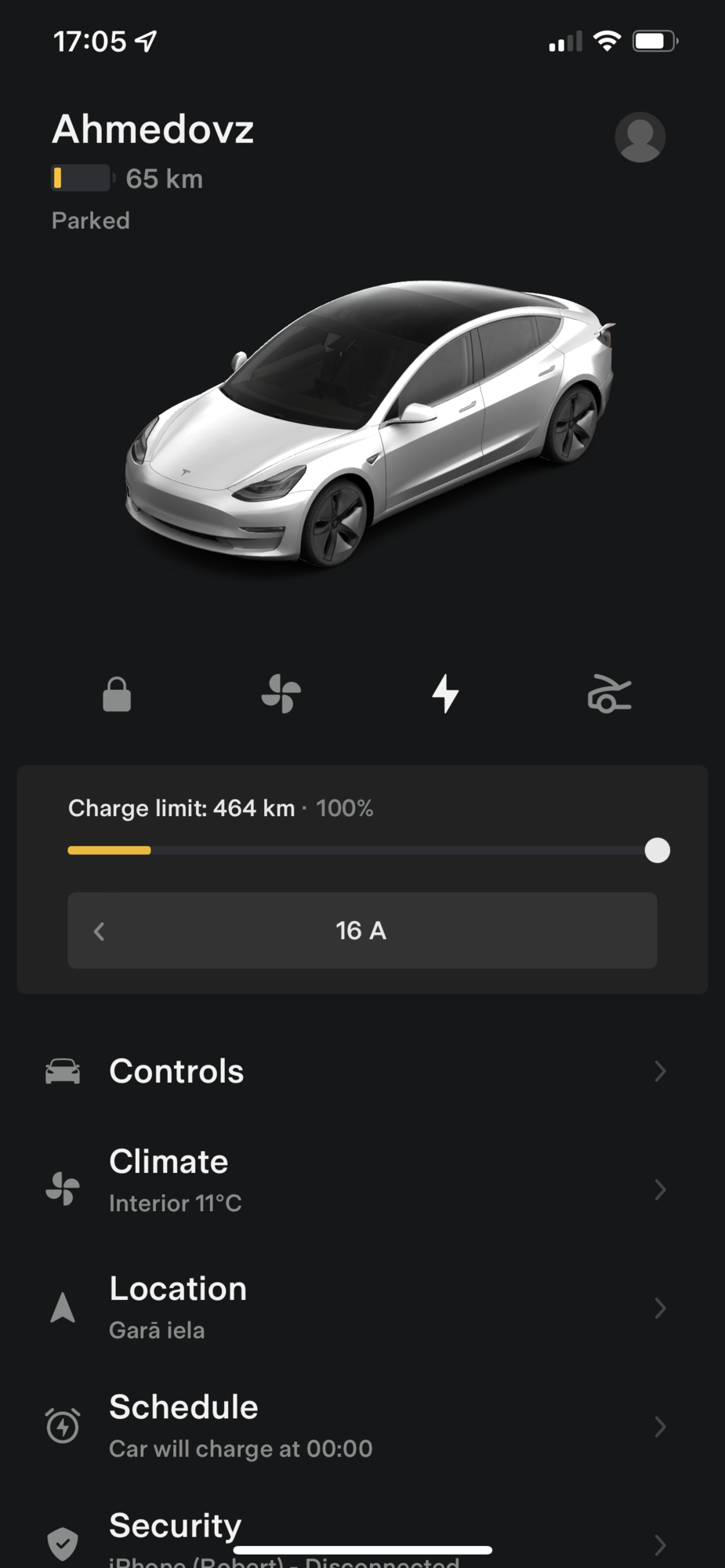
 teslamotorsclub.com
teslamotorsclub.com
It got me wondering what battery I have. After DM'ing @AlanSubie4Life, it was suggested to see if @eivissa may be able to shed some light.
Any idea what battery this is?
Part number 1660112-00-B
My CoC document states I have a E3LD, v19 with 567km range. The most I've seen was 311 miles at 100% rated on the app (slider to right). Only actually charged to 100% once, yesterday and got 300 miles rated range (10% to 100% charge).
Have I really got a Panasonic '82.1Kwh' battery, or is this not an E3LD?
I posted a message on another thread about how my UK 2021 Model 3 Performance seems to have lost 5% range in my first month since new. I have done 1100 miles.
Range Loss Over Time, What Can Be Expected, Efficiency, How to Maintain Battery Health
270 @ 100% long range, 19' wheels 10k miles only supercharged few times. Ouch....
It got me wondering what battery I have. After DM'ing @AlanSubie4Life, it was suggested to see if @eivissa may be able to shed some light.
Any idea what battery this is?
Part number 1660112-00-B
My CoC document states I have a E3LD, v19 with 567km range. The most I've seen was 311 miles at 100% rated on the app (slider to right). Only actually charged to 100% once, yesterday and got 300 miles rated range (10% to 100% charge).
Have I really got a Panasonic '82.1Kwh' battery, or is this not an E3LD?
Attachments
I havent seen that P/N before, but then this wouldnt worry me too much.Any idea what battery this is?
Part number 1660112-00-B
Then this is a good confirmation for your battery pack. 3L = Panasonic 82kWh.My CoC document states I have a E3LD, v19 with 567km range.
That is were they all are when delivered to the customer. This is around 79,5kWh and usually moves up into the low 80's initially.The most I've seen was 311 miles at 100% rated on the app (slider to right).
What's your daily charging limit? 80% / 90%?Only actually charged to 100% once
That is low indeed...around 76,6kWh. But then this does not mean, that your battery pack is bad. The Panasonic 2170L BMS is actually quite picky.got 300 miles rated range
If you charge it to 60% maximum daily and never or barely ever use DC chargers it does this...

If you charge it to 80%/90% and use any kind of DC chargers (20KW or 250KW, it doesnt matter), then it does this...

In the end it is all BMS guessing and calibration, so dont take it all too seriously. If you want to put your maximum (guessed) capacity to the test, then stick to 60% SoC and only use AC chargers for 2-6 weeks and see how your capacity is changing.
If you want to take the next step, I can send you the required diagnotic equipment, but I dont think it is necessary, really.
AlanSubie4Life
Efficiency Obsessed Member
So this means that Tesla is manufacturing 82kWh Panasonic packs in China? (This pack is made in China.)Then this is a good confirmation for your battery pack. 3L = Panasonic 82kWh.
I did not realize that - thought it was mostly other vendors, LG, CATL, whatever, at this point. But I don’t pay close attention I guess.
What's your daily charging limit? 80% / 90%?
I use a 3-pin UMC charger (10a, 230v, 2.5kw), and have a 4 hour off peak tariff. This means I charge 10% every night on the cheap rate. Usually it's between 60-70%. Actually, it's entirely possible that my slow 2kw 3-pin adaptor charging means the BMS doesn't know the full capacity of my battery. Up 10%, down 10%, drop 30% and supercharge up 30%.
I have supercharger referral miles, and I've used 250 over the last month. I usually go 40-80%
^ This is what got my attention as well... that it's not Made in USA - but I've not found any other 2021 M3 Performance stickers to compare against. I was concerned that the CoC document + BMS config had the wrong battery type on it, especially with parts shortages, and it's actually a slightly smaller battery installed. Would be great to see if others have the same P/N.So this means that Tesla is manufacturing 82kWh Panasonic packs in China? (This pack is made in China.)
I did not realize that - thought it was mostly other vendors, LG, CATL, whatever, at this point. But I don’t pay close attention I guess.
I did a 10%-100% calibration charge (using a neighbours 7kw charger) because 1) the range was dropping so much and 2) it fluctuated a LOT, 3) it's a month old with 1100 miles. See screen grabs attached, taken one after the other.
Finally, thanks for both responding and being far more useful than Tesla customer service - They said the rated range is affected by driving habits and because Sentry mode 'reserves' percentage ?!
Attachments
AlanSubie4Life
Efficiency Obsessed Member
As I mentioned in a PM, this is normal, for low SOC. This is just a projection and is highly dependent on rounding error. It’s not uncommon to see variation of over 20 miles in the estimate if you’re at a low SOC. You saw a variation of 6 miles at 20% - one picture was not projected to 100%. It’s just the math. 20% could be anywhere from 19.5% to 20.5%.it fluctuated a LOT, 3) it's a month old with 1100 miles. See screen grabs attached, taken one after the other.
At 5% I would expect it to predict between 290 miles of range and 350 miles of range, for example. While at 95% you might see a range of perhaps 3-5 miles on the estimates.
Thanks, sorry I forgot you mentioned that. Makes sense!As I mentioned in a PM, this is normal, for low SOC. This is just a projection and is highly dependent on rounding error. It’s not uncommon to see variation of over 20 miles in the estimate if you’re at a low SOC. You saw a variation of 6 miles at 20% - one picture was not projected to 100%. It’s just the math. 20% could be anywhere from 19.5% to 20.5%.
At 5% I would expect it to predict between 290 miles of range and 350 miles of range, for example. While at 95% you might see a range of perhaps 3-5 miles on the estimates.
I’ll try to do AC charging only for a while, keeping it around the 60% SOC. See if anything changes.
The numbers 340/352 makes perfect sence for the LG E5L battery( slightly over 79kWh) so it is highly probable that this is the reason.Same for others country in Europe. It could be LG E5L pack instead of Panasonic E3L.
More information here :
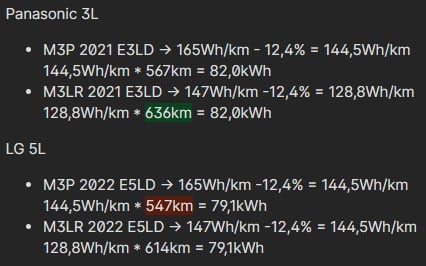
The Pana 2170L is US made and was imported for the M3P as I understand it.So this means that Tesla is manufacturing 82kWh Panasonic packs in China? (This pack is made in China.)
I did not realize that - thought it was mostly other vendors, LG, CATL, whatever, at this point. But I don’t pay close attention I guess.
I think I did read Teslas word for it, about starting to use locally made batteries instead of transporting batteries over the world.
How can you say it’s China made? Serial no? [Edit] Just found that picture
There most probable will be a LG ”82” pack with the code 5L( or E5L, E5LD for the whole code). It doesnt really reach 82kWh according to both the LG M50-cell spec, and the EU CoC’s etc that eivissa have shown. Its very likely to be 791-79.2kWh.
The LG M50 cell(if its the regular one used), is marked/specified 18.2Wh and tested to reach about 18.1or so which makes some 79.5kWh for the pack.
I think eivissa said ”we are expecting that E5L in the next official certification paper”.
That LG E5L shouldnt be on the streets in EU yet if I get it wright.
transpondster
Member
didn't certification showed 4,6 h old LG, 4,8Ah old Panasonic, and 5.0 for both new cells? If so difference between new LG and Panasonic should be less than 0,1Ah or 2%The Pana 2170L is US made and was imported for the M3P as I understand it.
I think I did read Teslas word for it, about starting to use locally made batteries instead of transporting batteries over the world.
How can you say it’s China made? Serial no?
There most probable will be a LG ”82” pack with the code 5L( or E5L, E5LD for the whole code). It doesnt really reach 82kWh according to both the LG M50-cell spec, and the EU CoC’s etc that eivissa have shown. Its very likely to be 791-79.2kWh.
The LG M50 cell(if its the regular one used), is marked/specified 18.2Wh and tested to reach about 18.1or so which makes some 79.5kWh for the pack.
I think eivissa said ”we are expecting that E5L in the next official certification paper”.
That LG E5L shouldnt be on the streets in EU yet if I get it wright.
That certification showed which cell was used. For Panna 2170, its marked size is 4.8Ah and for the 2170L its 5Ah according to the papers.didn't certification showed 4,6 h old LG, 4,8Ah old Panasonic, and 5.0 for both new cells? If so difference between new LG and Panasonic should be less than 0,1Ah or 2%
In real life, a cell marked 5Ah doesnt always reach 5.000Ah. Thats one of the things battery test nerds check.
Also, we are talking Energy( Wh or kWh) and the Energy in a batteri is Ah times average voltage during tha discharge(marked as nominal voltage on the cell). This differs, specially if you change the chemistry like it certainly lookin this case. Tesla Panasonic classic is NCA, LG M50 is NMC.
5Ah can be both 17Wh and 18Wh due to this.
Panna ”old” 2170 is marked 4.8Ah( gives 77.8kWh on the pack level).
LG M48 is also marked 4.8Ah but only reach 75kWh on the pack level.
Nerd level explanaition —> Its also marked 17Wh, which explain the difference.
17Wh/4.8Ah= 3.54 volt on average.
The panasonic 2170 thats probably the one used in M3 says 17.8Wh= 3.71v in average.
We know that the EU LR with E5 LG M48 cell has about 75kWh, and we know it has a WLTP of 580km. The E5L is supposed to get 614km, which for the same consumption ad up to 79.4 or so.
For the M3P the difference between 567km and 547km ad up exactly with the change to a battery with 79.2kWh capacity.
Attachments
Last edited:
transpondster
Member
I was referring to this post:That certification showed which cell was used. For Panna 2170, its marked size is 4.8Ah and for the 2170L its 5Ah according to the papers.
In real life, a cell marked 5Ah doesnt always reach 5.000Ah. Thats one of the things battery test nerds check.
Also, we are talking Energy( Wh or kWh) and the Energy in a batteri is Ah times average voltage during tha discharge(marked as nominal voltage on the cell). This differs, specially if you change the chemistry like it certainly lookin this case. Tesla Panasonic classic is NCA, LG M50 is NMC.
5Ah can be both 17Wh and 18Wh due to this.
Panna ”old” 2170 is marked 4.8Ah( gives 77.8kWh on the pack level).
LG M48 is also marked 4.8Ah but only reach 75kWh on the pack level.
Nerd level explanaition —> Its also marked 17Wh, which explain the difference.
17Wh/4.8Ah= 3.54 volt on average.
The panasonic 2170 thats probably the one used in M3 says 17.8Wh= 3.71v in average.
We know that the EU LR with E5 LG M48 cell has about 75kWh, and we know it has a WLTP of 580km. The E5L is supposed to get 614km, which for the same consumption ad up to 79.4 or so.
For the M3P the difference between 567km and 547km ad up exactly with the change to a battery with 79.2kWh capacity.
MASTER THREAD: 2021 Model 3 - Charge data, battery discussion etc
I wonder why the Europe/UK LG/capped Panasonic never showed even 353 miles (the advertised epa at the time) then? Not sure what’s changed so that they are advertising 360 miles with a 75kwh battery? Although advertised and what ends up being displayed on the screen are two different things I...
I do not follow in the reasoning (but its maybe me…)I was referring to this post:
It looks from certification and states cells capacity, there is zero reason to misrepresent them. I think these new cells have few similarities with same name cells which were available for years. NMC have the same or better voltage...
MASTER THREAD: 2021 Model 3 - Charge data, battery discussion etc
I wonder why the Europe/UK LG/capped Panasonic never showed even 353 miles (the advertised epa at the time) then? Not sure what’s changed so that they are advertising 360 miles with a 75kwh battery? Although advertised and what ends up being displayed on the screen are two different things I...teslamotorsclub.com
I think you mix EPA and WLTP?
The advertised WLTP range for a LR with capped battery(or LG 75kWh) is 580km(360mi). This WLTP range will never be seen on the screen. The screen range is always close to the EPA range(as it is the base for the range). The exception is the capped panasonic/LG with 75kWh capacity as these never was certified in US with EPA.
The ”constant” for the US EPA is used, causing the screen range to be less than the US version with non capped battery.
We know for sure that the first LG cannot hold more than 75kWh. That one is not capped. Instead each cell has a quite small capacity. 75000/4416= 17Wh. Maybe a coincidence, but it is the same number as the regular LG M48 hav in the spec.
If you have 17Wh from 4.8Ah, the nominal voltage cannot be very high. 17/4.8= 3.54volt average (nominal).
Tesla Pansonic initial 2170 was also marked 4.8Ah According to certification papers, but did have a higher capacity: This gave that battery 77.8kWh ”New” capacity.
The new LG( M50) is also smaller than the new Panasonic 2170L,theres really no question about it. Tests on the net imply that the regular M50 would give a total capacity of about 79.5kWh. The certification data show us more or less the same numbers.
From this the conclusion is that it would not be probable that the new LG is as big as the new Panasonic.
The constant for for LR with the LG 75kWh and the bigger M50 show us that it doesnt have very high capacity(79.X kWh). All data tell us the same thing, the WLTP for the LR with E5LD and the data for the M3P with the 3.5% shorter range than the one with E3LD.
The new LG is relatively small.
The capacity in Amphere hours is not the same thing as the capacity in Watt hours, that is a fact and it is impossible to have for example high Voltage and High Amphere capacity and at the same time have a low capacity in Wh.
The capacity in the LR with the E5D is confirmed by people with SMT, so there is no guesstimates about this.
If you charge it to 60% maximum daily and never or barely ever use DC chargers it does this...

If you charge it to 80%/90% and use any kind of DC chargers (20KW or 250KW, it doesnt matter), then it does this...
After the 2021.32.21 I had a NFP drop the same night(from being stable at 80.3-80.4 for quite some time). This, despite a regular sleep at 25-35% and charge to 55-56%. The drop was about 0.5kWh, and after a few days sway it was stable at 79.9. Then it was stable for about one month, during this time I got 2021.36.5 which didnt show any direct change.
But shortly after I charged to 100% for a trip and then the NFP started to rise. Was up to 80.3 for a few days, today I charged to 100% for a trip to Tesla SC. The NFP increased to 80.4 (reached 80.8 nominal remaining).
I had a few higher charges last week so the BMS shouldnt be that badly calibrated.
It seems like there is a different NFP-calc from the BMS, or maybe its only a coincidence? The behaviour is not the same, more or less the
opposite from what I have seen before( the same as you eivissa).
Last edited:
2) it fluctuated a LOT
The logic of 100% range in APP works like this...
1) When the SOC is 3km/1%, 100%=300km
2) When the SOC is 4km/1%, 100%=400km
3) When the SOC is 5km/1%, 100%=500km
It's just a convenient way to see your 100% rated range.
It actually added another level of fluctuation/error to the "already-fluctuating" rated range.
Attachments
Simply ENVY.After the 2021.32.21 I had a NFP drop the same night(from being stable at 80.3-80.4 for quite some time). This, despite a regular sleep at 25-35% and charge to 55-56%. The drop was about 0.5kWh, and after a few days sway it was stable at 79.9. Then it was stable for about one month, during this time I got 2021.36.5 which didnt show any direct change.
But shortly after I charged to 100% for a trip and then the NFP started to rise. Was up to 80.3 for a few days, today I charged to 100% for a trip to Tesla SC. The NFP increased to 80.4 (reached 80.8 nominal remaining).
I had a few higher charges last week so the BMS shouldnt be that badly calibrated.
It seems like there is a different NFP-calc from the BMS, or maybe its only a coincidence? The behaviour is not the same, more or less the
opposite from what I have seen before( the same as you eivissa).
View attachment 730457
View attachment 730435
I'm at 76 kWh NFP.
It seems that even if you leave your normal way to charge (AC to 55-58%) to a more stressful way (DC SuC) , you always have the better NFP ever.
I still continue to experience drops when i let the car (due to force majeure ) under 20% SOC.
Then it recovers some but not all what lost in the drop.
About balancing (going near 90% or to 100% and let it charge up to stop) I don't understand if it has something to do with IMBALANCE in SMT in mV.
I always have 4 mV imbalance ( rarely 6.00).
This means that the BMS is perfect calibrated? What the relation between the Imbalance shown and the BMS being not accurate/calibrated?
And the BMS (Battery Management System) is Calibrated or Balanced? OR are the cells to be Balanced?
If at 4.00 mV this means that theere is no room for improvement?
Curiously... just after a 100% prolonged charge (up to complete Stop) the imbalance on SMT is Higher in my car
Similar threads
- Replies
- 22
- Views
- 9K
- Replies
- 73
- Views
- 13K
- Replies
- 4
- Views
- 12K
- Article
- Replies
- 27
- Views
- 17K
- Replies
- 52
- Views
- 33K



